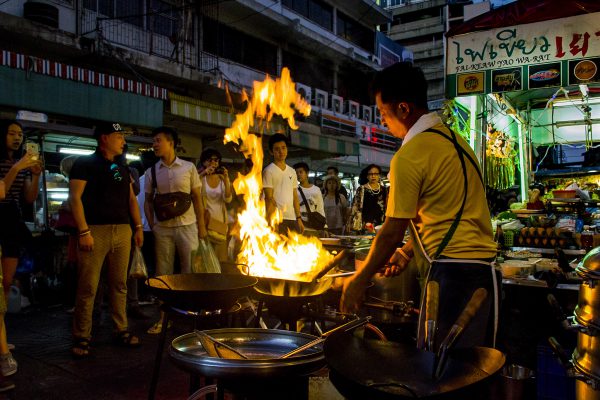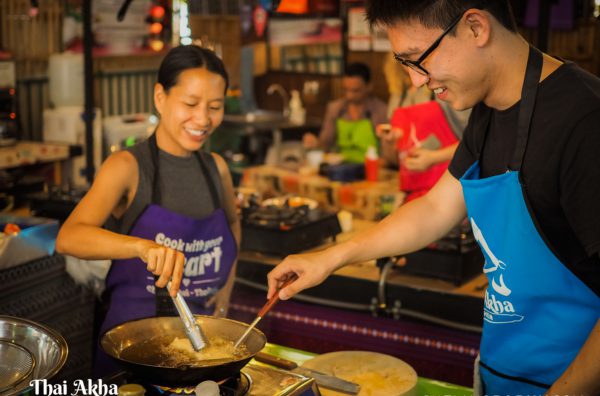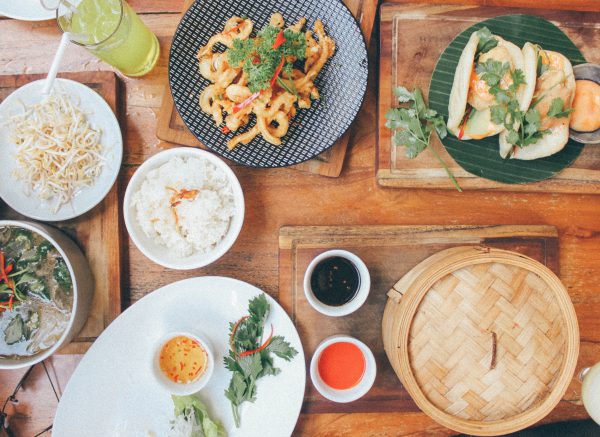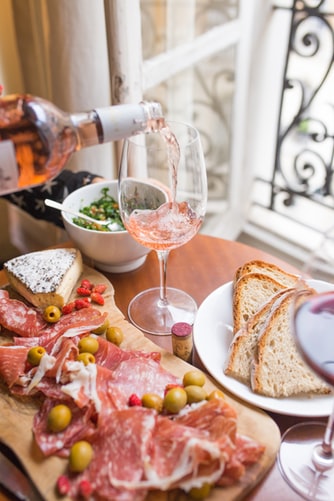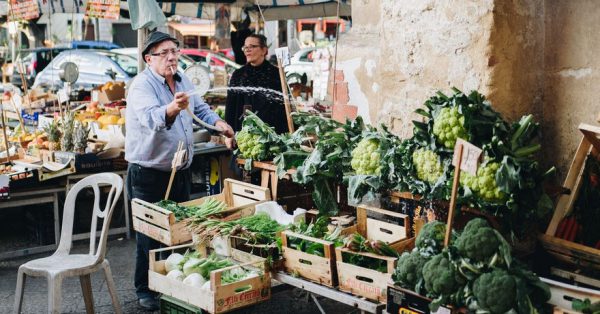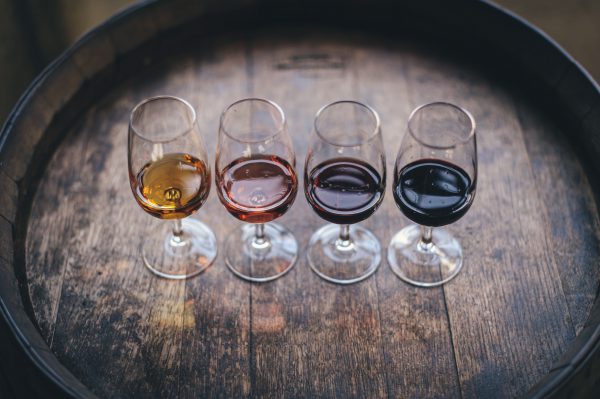Last Updated on May 16, 2022
Apart from being one of the most interesting places on earth in terms of its history, culture, and nature, Lisbon is particularly great for eating out. The capital city is located at the Western end of Europe and above Gibraltar Bay, a melting pot of many different and delicious cultural influences.
The Portuguese cuisine features seafood, meat-heavy dishes, and magnificent desserts full of strong flavors. Each recipe reflects the unique history and culture of the place, feeding your imagination along with your body whenever you have a meal. If you want to learn more about the delightful Portuguese cuisine and culture, check out one of our cooking classes in Lisbon.
So, here are 15 dishes to try while you are in Lisbon. The list includes the seven wonders of Portuguese gastronomy, elected by the Portuguese through online public voting in 2011, and 8 other dishes we think you shouldn’t miss out on. We sorted our list starting from appetizers, takeaway foods, and sandwiches, followed by main dishes, and finished with desserts. Here we go!
1. Queijo Serra da Estrela
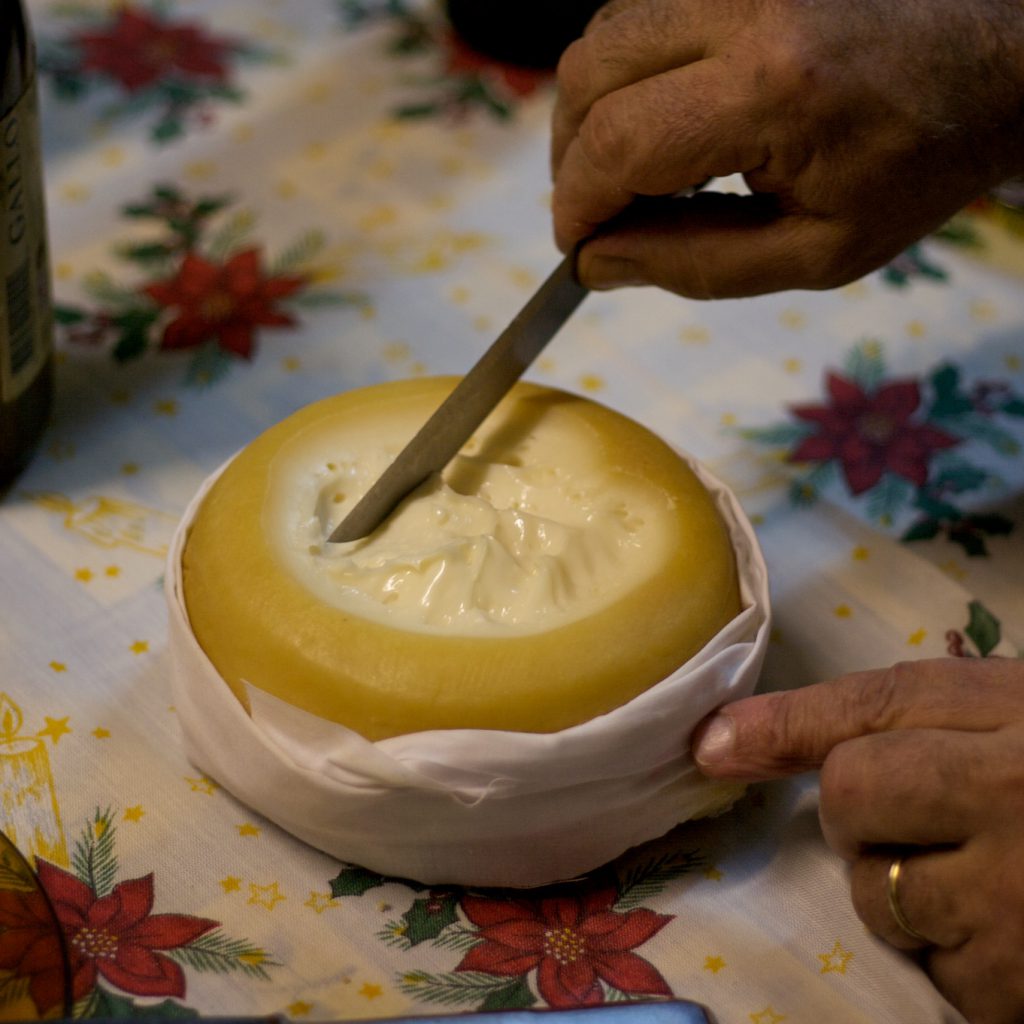
Cheese from Serra da Estrela is a special kind of yellow cheese that was chosen as one of the seven gastronomical wonders of Portugal. This magnificent cheese comes from Serra da Estrela, the highest mountain range in Portugal.
Serra da Estrela has rich natural resources and is the home of a special breed of sheep, the Bordaleira, that produces the milk this special creamy cheese is made from. The recipe of Queijo Serra de Estrela dates back to before Christ and its production requires following rigorous rules. The cheese curd is made in a very specific way.
The main ingredient of the curd is the handpicked and manually processed cardoon flower. Since the production depends on the natural cycles, the cheese can only be produced between November and May and has to mature in specific conditions, for a minimum of 30 days.
The texture of the Queijo Serra da Estrela changes according to the aging period. At first, it’s very soft and creamy but, as time goes by, it hardens enough to be sliced. It blends rustic flavor and sweetness with acidity and you are sure to be seduced by its excellent taste.
2. Bifana
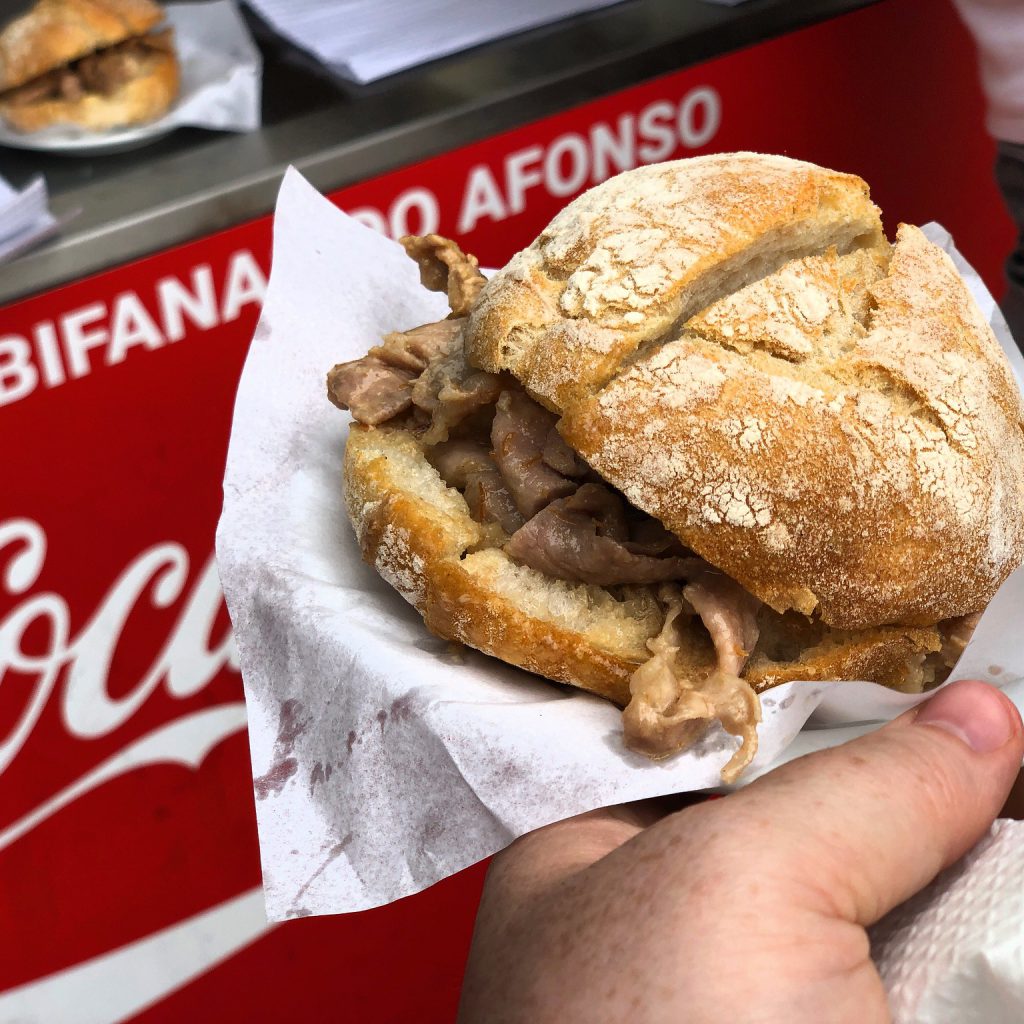
Bifana is a sandwich filled with marinated pork slices boiled in a spicy sauce, served inside papo seco, a traditional crunchy Portuguese bread roll. Bifana is an iconic sandwich in Portugal and you can find it in many places in Lisbon. Every restaurant or tasca (a small buffet where you can grab sandwiches on the go) has its own Bifana recipe and the taste can vary from smoked to sweet to spicy.
Bifana is a great choice for a quick meal when you are walking around the city. The fact that you never know what you’re exactly getting makes it even more fun.
3. Frango Assado (Frango a Piri-Piri)

Frango assado is a spicy roasted chicken you can get as takeaway food. Seasoned with a unique spice mix, the chicken is hot enough to make you turn red on its own, but if you love spicy food, you can always ask for more piri-piri, a chili oil that takes the roasted chicken to another level.
Frango a piri-piri is an edible symbol of the Columbian Exchange. Piri-piri means pepper-pepper in Swahili and the chili pepper is native to Latin America. Enslaved people who managed to make their way back home seem to have brought chili pepper seeds to Africa, where the plant flourished. Pepper seeds were later taken to Europe, after which the Portuguese adapted the recipe to include chili to their taste and in their particular way of cooking.
Nowadays, the sauce is made from ground piquant pepper, garlic, olive oil, vinegar, bay leaves, lemon juice, and salt.
4. Alheira de Mirandela
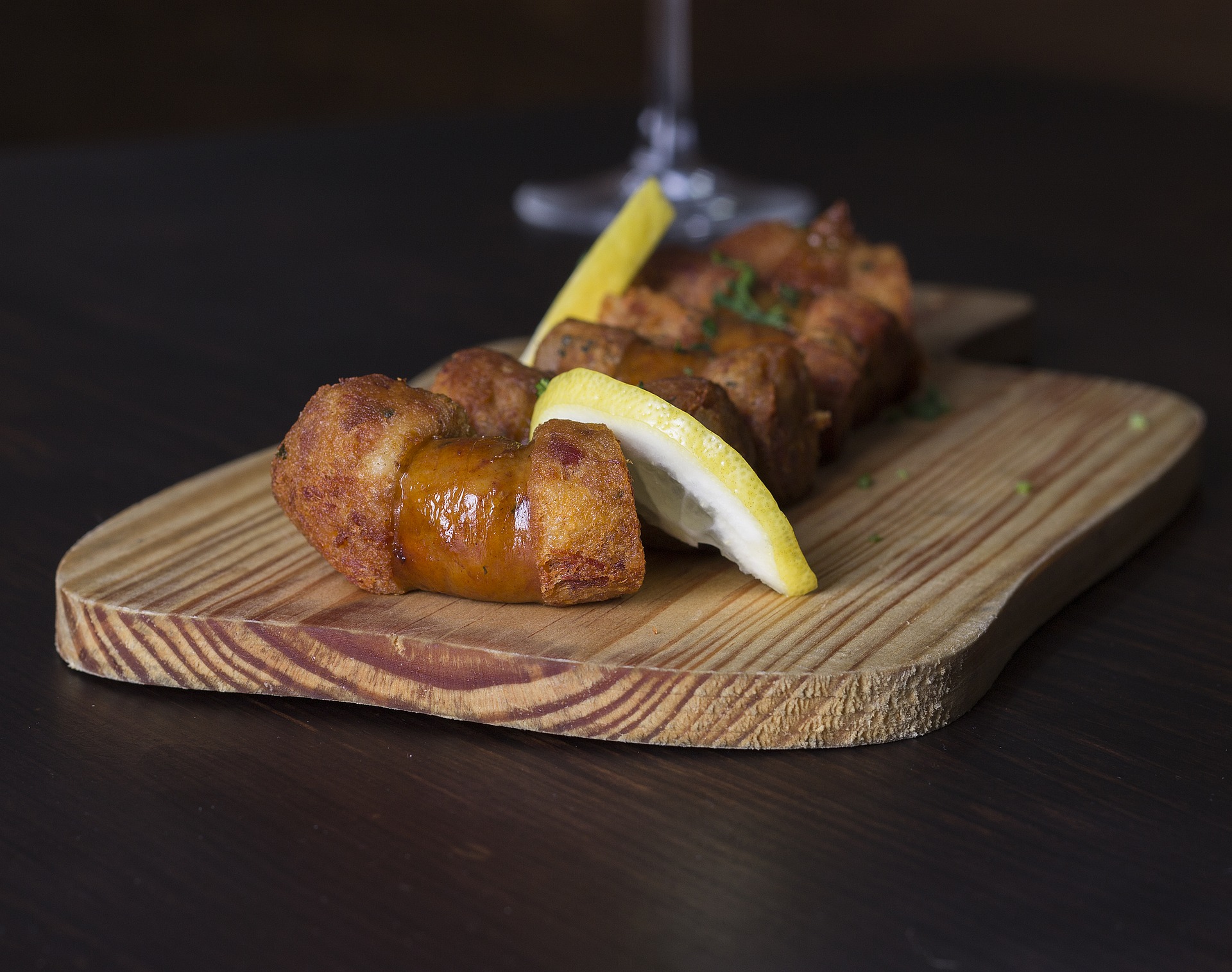
Another proud member of Portugal’s seven gastronomic wonders, alheria de Mirandela has a particularly interesting history. It’s a sausage (traditionally made without pork) that has saved, hundreds or even thousands of lives, not from the threat of hunger but the threat of the inquisition.
Lisbon was an intercultural hub with many elements from Christian, Muslim, and Jewish cultures and cuisines when the Christian crusaders took over the city around the 12th Century. When the religious polarization increased throughout Europe, so did the inquisition’s power over the region, leading to the establishment of the Portuguese Inquisition in the 16th century. Jewish minorities in Portugal altered many of their traditions in order to disguise themselves as Christian converts. The alterations included disguising Hebrew prayers in Christian rituals and pretending that they consumed pork.
Alheira de Mirandela is a special kind of sausage that’s made from garlic, breadcrumbs, and different kind of meats. It looks, smells, and almost tastes like the sausages that are made with pork. Thus, alheira de Mirandela became a staple food for the Jewish people in Portugal, helping them avoid the inquisition.
Today the sausage is made with every kind of meat, including poultry, beef, and pork along with lard and fat. The sausages are smoked using oak or olive bark to give them their unique flavor.
5. Sardinhas Assadas

Portugal has one of the highest fish consumption rates in Europe and sardines are very popular. There are dozens of lojas de conservas in Lisbon streets, where you can buy canned sardines with many different sauces, flavors, and seasonings. But canned food can’t compete with Sardinhas Assadas, a traditional dish with freshly grilled sardines.
Sardines are the staple food for one of the biggest festivals held in the country. If you visit Lisbon in June, you can see the city turn into an immense, sprawling festival for the celebrations of Festas dos Santos Populares, the popular saints’ festival. The festival lasts for 14 days centering on the night of the 12th of June, which is the day of Saint Anthony. The city is decorated with colorful ornaments and countless barbeques are fired up to sacrifice sardines in the name of the popular saints.
You can watch traditional dance shows, listen to traditional uptempo folk music pimba and enjoy sardines from the many improvised sardine barbeques that take place all around the city.
6. Francesinha
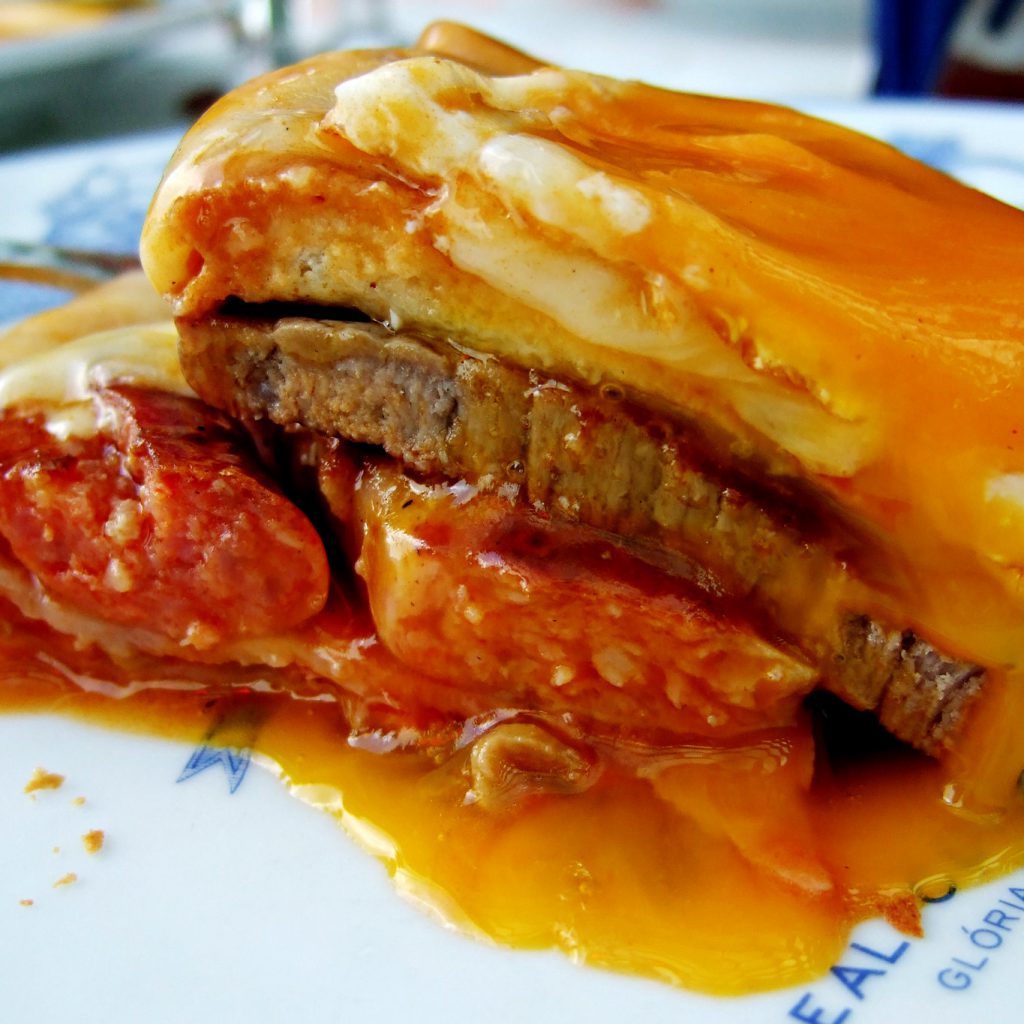
Francesinha isn’t even a century-old but it nonetheless has become a superstar in Portugal. Francesinha means the little Frenchie, a dish rumored to have been created by Daniel David de Silva, who was a returned French emigrant.
Francesinha is much more than a little sandwich. It’s a wholesome meal served in restaurants and made of beef or pork steak, ham, smoked sausages or chicken (or some combination of these delicatessens), carrots, onions, tomato paste, bay leaf, a bit of beer, milk, and chili powder as per order.
Although the recipe may differ from cook to cook, the main idea is to thicken the sauce with cornflour until it turns into a gravy. Then the sauce is strained. The chunky parts go in between toasted bread, and sliced cheese goes on top of the sandwich, which is then grilled so that the cheesy goodness covers the whole thing. Then the sandwich is topped with a fried egg before the hot Francesinha sauce is poured over it.
It’s usually served with french fries and goes perfect with a cold beer. Even though this savory sandwich is mainly associated with the northern city Porto, you can definitely find great Francesinha in Lisbon too, and it’s something you shouldn’t miss out on.
7. Caldo Verde
Caldo verde is a kale soup that made its way to the list of seven gastronomical wonders of Portugal. The green soup is made with simple traditional ingredients that create an impressive flavor when combined.
The dish originated from the Minho Province in northern Portugal where it has been prepared for centuries. Today it’s cherished as a traditional gem, popular even in places like Rhode Island, New Jersey, Massachusetts, and of course, Brazil, where Portuguese migrant communities live.
This one-pot recipe isn’t a stunner in the looks department, but its humble look conceals hearty deliciousness. It’s a great soup for the winter months when the weather is cold and overcast. The Portuguese like to serve caldo verde on social occasions like birthdays and other celebrations as well.
It’s traditionally made from couve-galega, Galician kale that has wider and taller dark-green leaves than the American kale, with strong fibrous stems. The recipe includes garlic, onions, potatoes, and chouriçov (a special Portuguese sausage). The ingredients are left to simmer until the broth turns into a creamy green (hence the name, green soup). It’s served with a drizzle of extra virgin olive oil on top, along with a slice of broa, a satisfying and filling Portuguese cornbread. Overall, caldo verde is a filling, healthy, and life-giving meal for the body and the soul.
8. Bacalhau à Brás
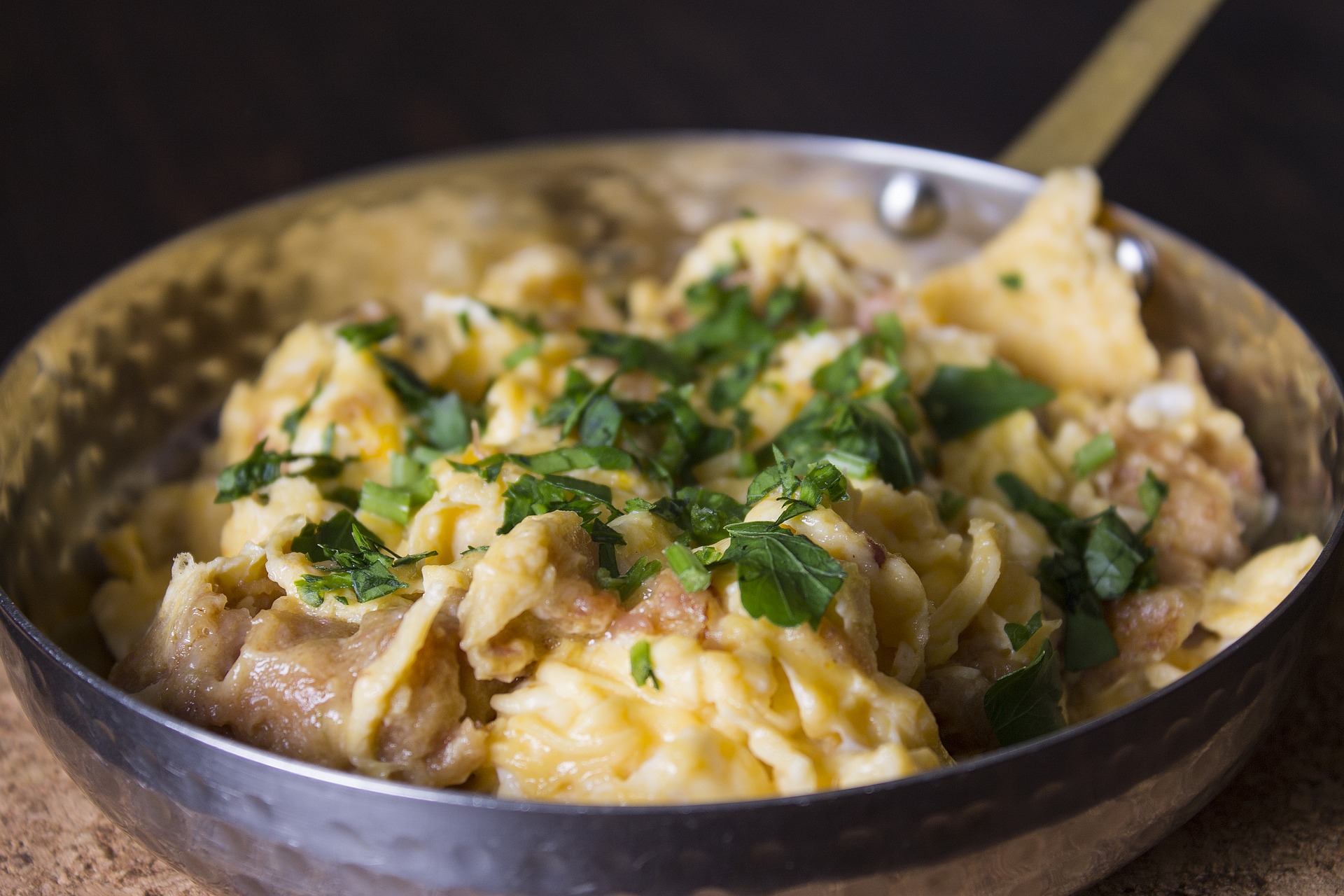
Bacalhau or salted codfish is embraced as the traditional Christmas Eve dinner in many parts of Portugal and is often served on social occasions. The cod that the Portuguese love has been imported from Norway for many centuries. Because the refrigeration techniques weren’t as efficient as today’s, the cod was salted to endure the trip from the Northern Atlantic to Portugal. Bacalhau was the main food source of the Portuguese 14th-century voyages of discovery.
Like any other national staple, there are many different techniques for preparing Bacalhau in the different regions of Portugal. Bacalhau à Brás originates from the Bairro Alto region in Lisbon and it’s made from shreds of salted cod, with a base of finely chopped potatoes and onions. After they’re cooked, the ingredients are bound with scrambled eggs and garnished with black olives and fresh parsley on top. Even though this is the most common way to make Bacalhau à brás, it’s also possible to find it made with other vegetables and mushrooms.
9. Carne de Porco à Alentejana
View this post on Instagram
The next must-eat dish is carne de porco à Alentejana. It means Alentejo-style pork meat. There are disputes about the origin of the dish as Alentejo doesn’t have a wide seashore. You might be thinking, what does a pork dish have to do with a seashore?
Well, Carne de Porco à Alentejana is a surf-and-turf duo that’s made of pork and clams. Even though mixing red meat with fish is a big no-no for some foodies, it’s one of the most popular pork dishes in Portugal with many different versions in the country, especially in Algarve, a coastal region rich with a variety of seafood options.
The traditional stew is made with black pork that’s marinated in white wine, red pepper paste, paprika, coriander, and garlic (and sometimes cumin too) overnight. The pork is fried and mixed with clams, and they’re boiled until the clams open to release their unique flavor in the stew.
10. Caldeirada

If you love seafood, hold on tight, because caldeirada is one of the richest seafood stews you can ever have. It’s comparable to other famous Mediterranean fish stews like the Greek kakavia, French bouillabaisse, Italian cacciucco, or Spanish zarzuela. What makes caldeirada special is the quality of ingredients that you can only find on Portuguese shores.
Caldeirada is said to have originated during the Ages of Discovery in the 15th century and has been Portugal’s official one-pot fisherman’s stew since then.
It consists of different kinds of fish (it traditionally depended on what the fishermen were able to catch that day) and traditionally doesn’t contain any kind of shellfish, though shellfish, shrimp, octopus, squid, or even eel can be added to the stew.
When preparing Caldeirada, it’s important to cook the fish and seafood with all of their parts, heads, bones, and skin, and let it simmer for at least an hour in order to obtain all of the flavors from the sea.
On top of seafood, Caldeirada also has veggies such as peppers, tomatoes, onions, potatoes, and spices such as coriander, bay leaf, parsley, paprika, and occasionally brandy, wine, or whisky. Even though this lovely stew had a humble reputation in the past, nowadays, it’s served in many high-class restaurants and has made its way in fine dining menus.
11. Arroz de Pato
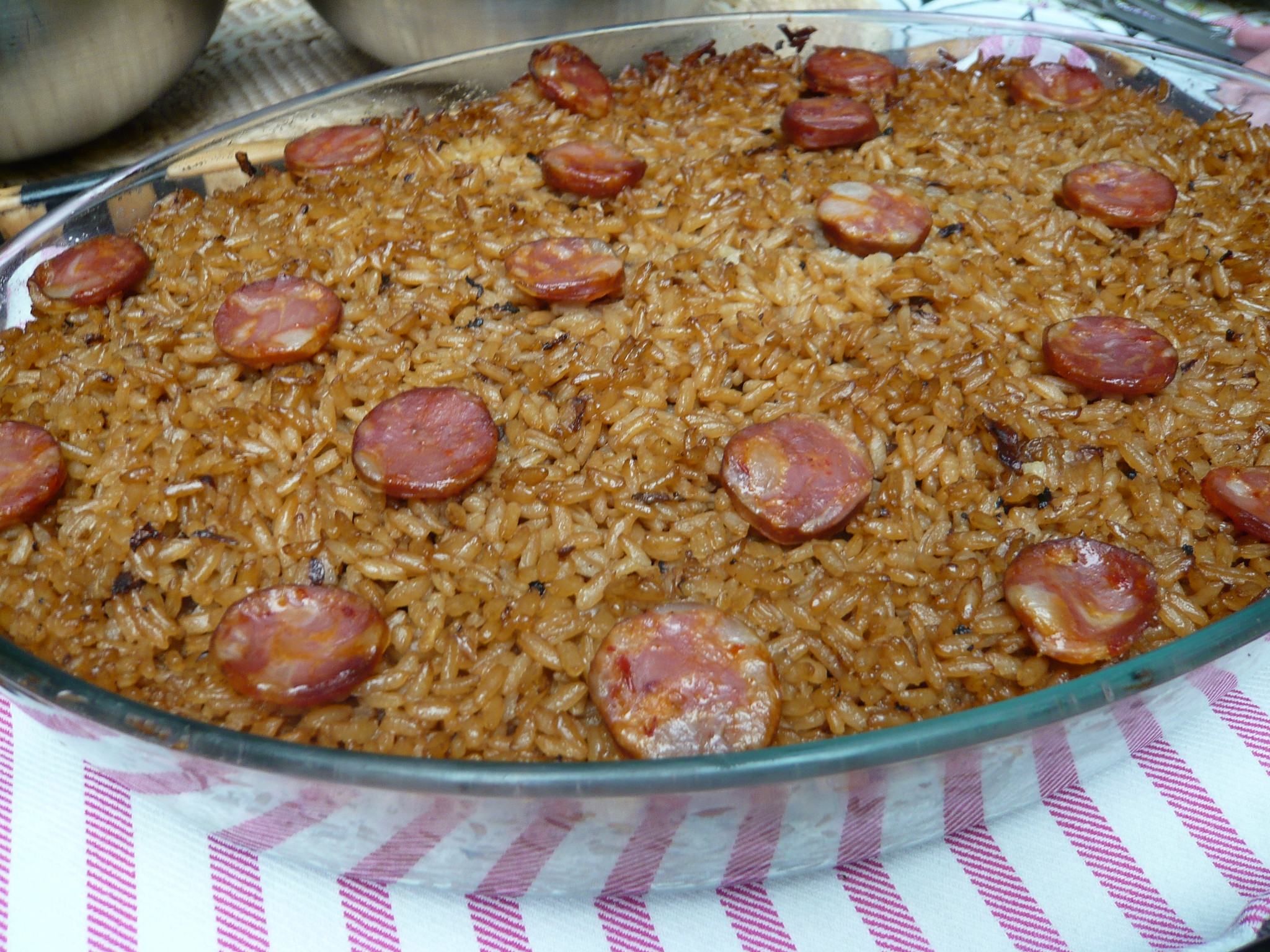
Arroz de pato, or rice with duck, is another traditional masterpiece that comes from the Northern regions of Portugal, the city of Braga to be precise. It’s believed to have been brought to the Iberian Peninsula during the Moorish period when the Moors ruled the peninsula from the 6th century until the 13th.
To make arroz de pato, Portuguese chefs use carolino rice which is a short-grain rice that absorbs all the flavors you toss in it easily and leaves you with a creamy rice dish, like Italian risotto. But arroz de pato lacks the starchiness of the risotto. It’s a creamy savory bowl of rice full of different flavors and strong accents that distinguish it from the other rice-based dishes around the world.
First, the whole duck is cooked in a stock with different seasonings, sausages, and smoked meat. Then the meats, which are cut into small pieces, are taken into an earthen pot leaving the broth they’ve released their flavors into for cooking the rice. The rice is then topped with the meat and the whole plate is garnished with sausage slices and smoked meat pieces before it’s baked until the top turns golden yellow. The end result is a harmonious dish that’s infused with all of those disparate flavors.
Even though the locals usually have the duck rice at home on Sundays or on special occasions, you can easily find it at restaurants in Lisbon.
12. Leitão da Bairrada
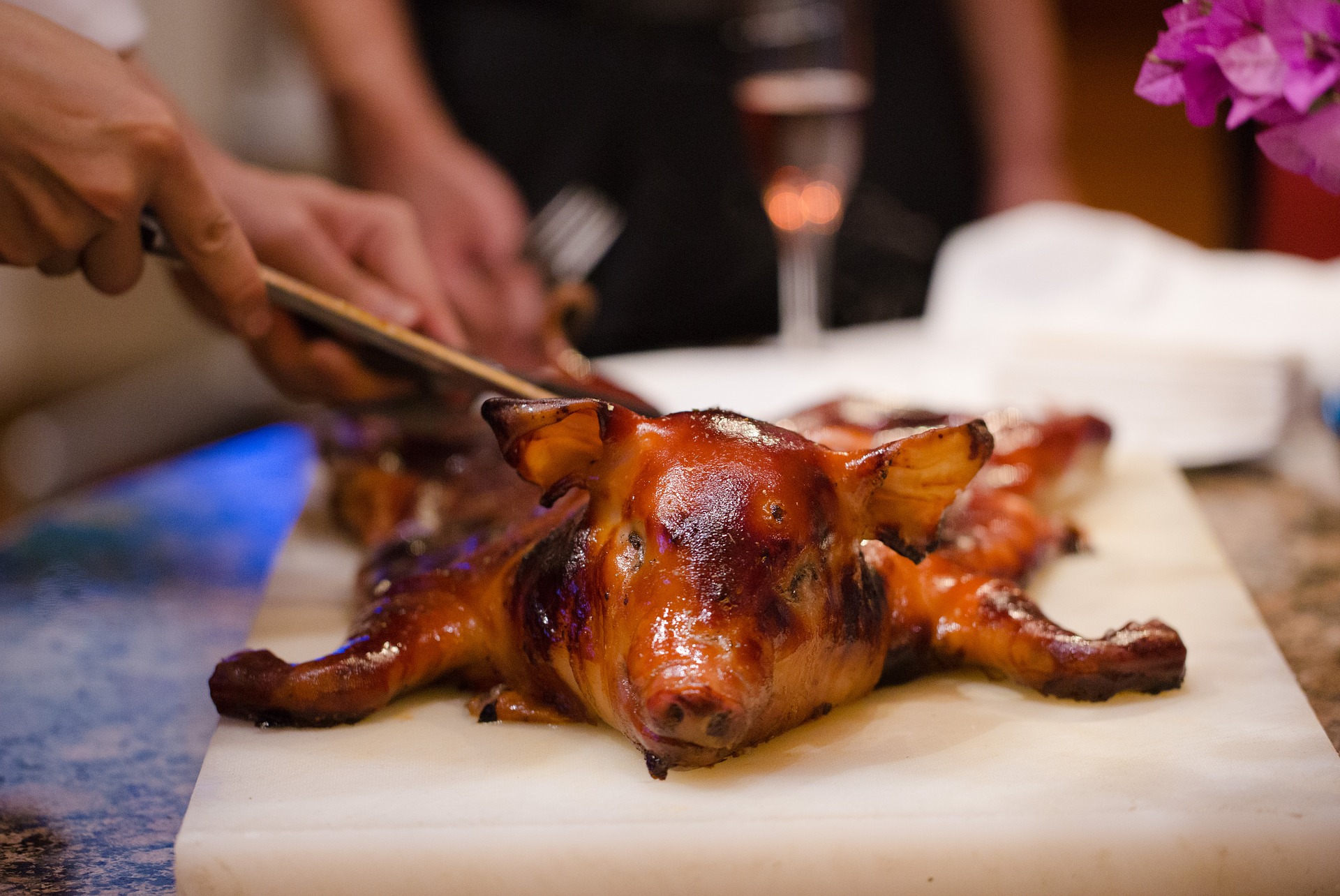
Leitão da Bairrada, Bairro style suckling piglet, is another well-known dish in Portuguese cuisine, and one of the seven gastronomical miracles of Portuguese cuisine.
The Portuguese love meat dishes, but this one is especially luxurious because it’s made of a young (about a month old), suckling piglet. Using meat from young animals isn’t a new way of feasting. But this traditional dish has been the center of admiration for at least a couple of centuries around the Bairrada region. The meat is seasoned with spices, olive oil, and lots of garlic. Then it’s skewered on a pole to be cooked in an oven that’s heated with aromatic eucalyptus bark and vines until the skin turns crispy while the meat undergoes pull-apart tender.
The best place to try Leitão da Bairrada is up in the north, around the Bairrada region, as their pork is considered the best in the country. However, if you’re only visiting Lisbon, you can still find a pretty good Leitão da Bairrada as it’s consumed in huge quantities throughout the country. This dish is so beloved in Portugal that there is even a gastronomical brotherhood for it.
13. Arroz de Marisco
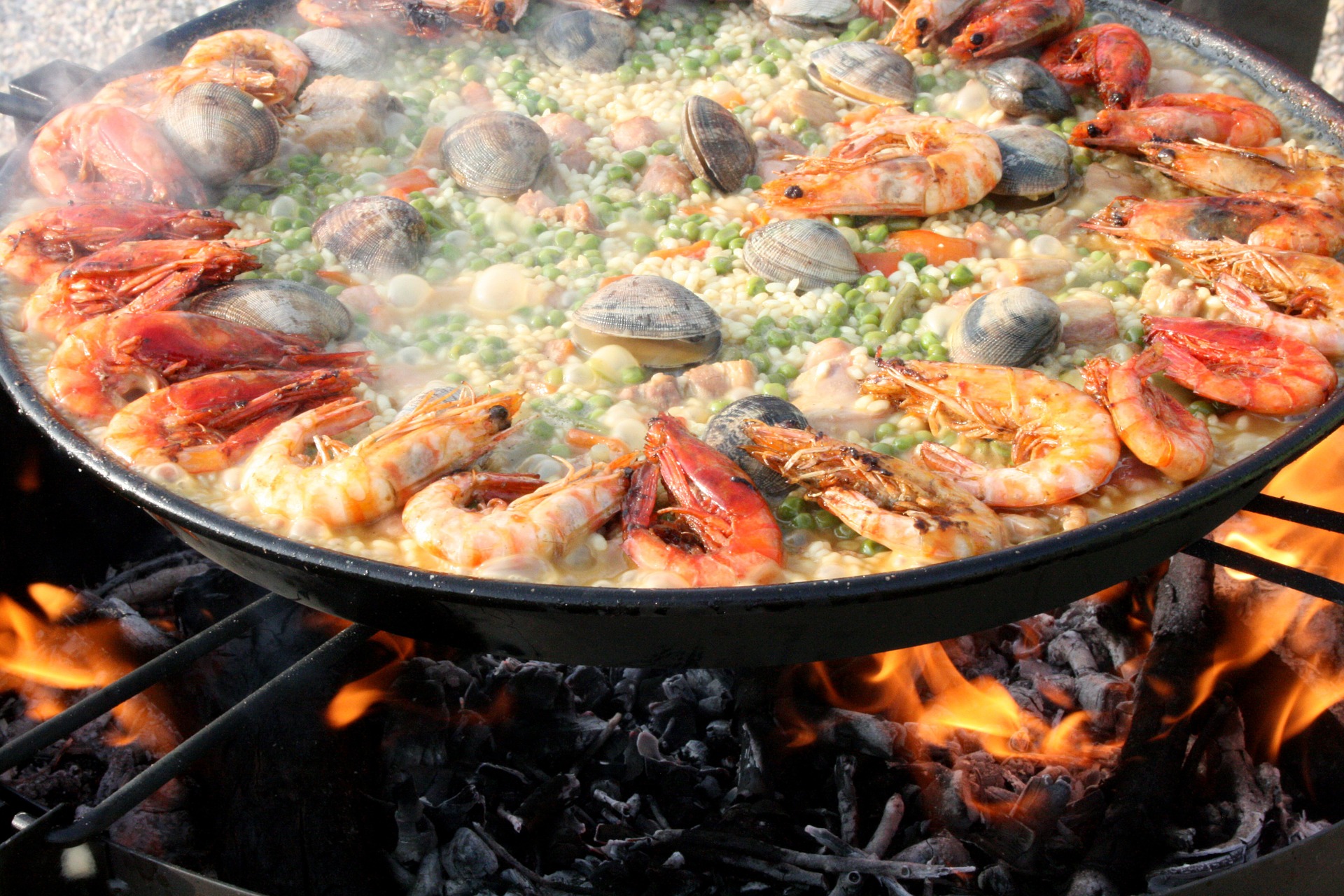
If you like seafood, Portugal has a lot to offer to you and arroz de Marisco is proof enough. Arroz de Marisco is a relatively new addition to the gastronomical heritage of Portugal, a recipe only half a century old, though it has nevertheless managed to make its way to the seven wonders of Portugal gastronomy list.
It’s easy to compare arroz de Marisco with the Italian risotto or the Spanish paella, but, arroz de Marisco has its own accent tones with generous amounts of fish and pre-cooked fish broth that gives flavor and texture to the rice, leaving it moist and thick, almost like a soup. It’s common to make this delicious seafood rice dish with various types of shellfish such as clams, mussels, prawns, or even lobster and crab meat along with various vegetables.
The creation of arroz de marisco is associated with Praia de Vieira, a beach town located a little north of the capital Lisbon. Still, it’s possible to find it in restaurants all around the country as it’s one of the most beloved dishes of Portuguese cuisine.
14. Toucinho do Ceu
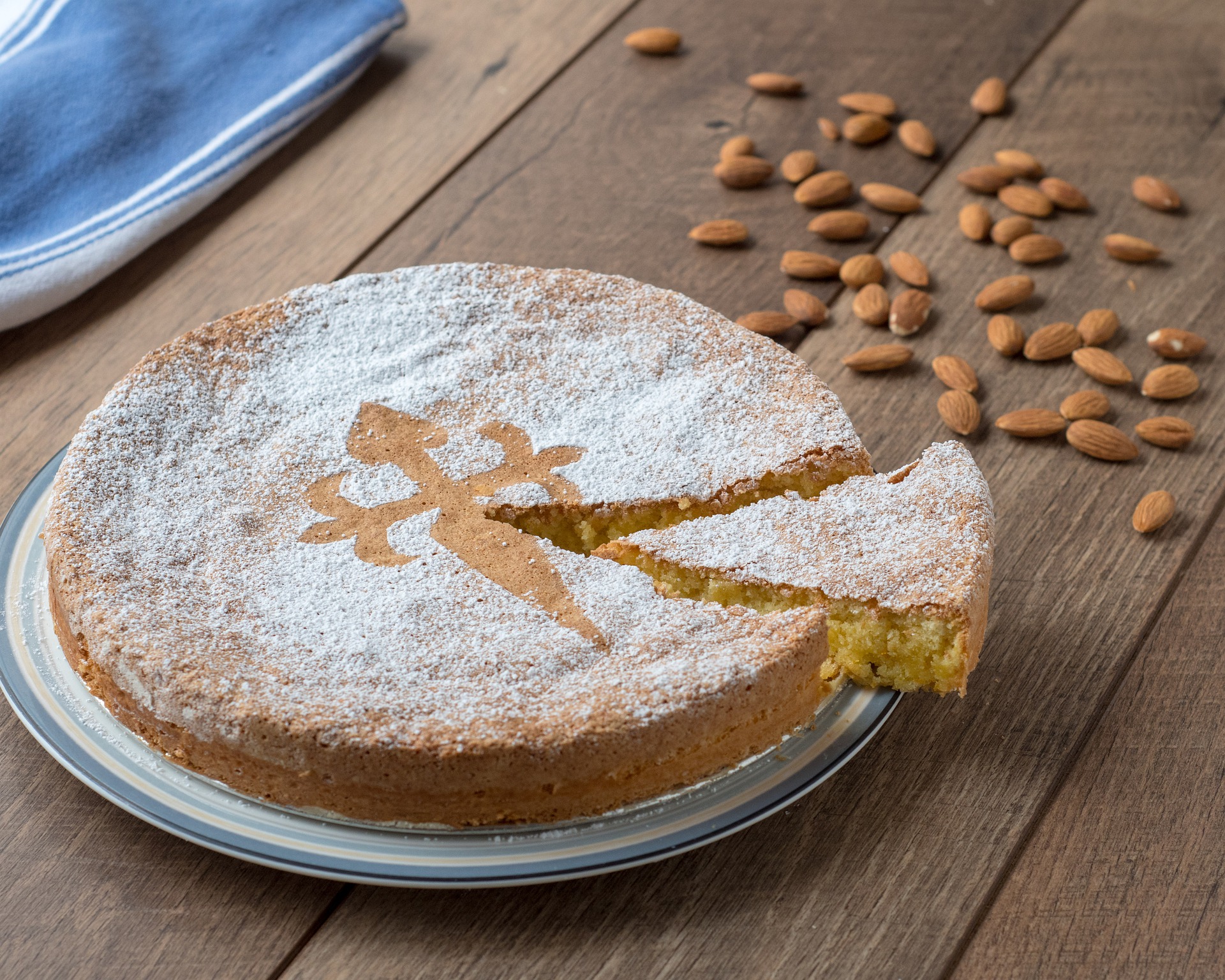
The history of this sublime dessert dates back to centuries ago. In the 1800s, Portuguese women used to come to convents, not to become nuns but to learn cooking and other domestic duties. This recipe was very popular in the convents and kept its popularity even when they were shut down.
Toucinho do ceu literally translates to “pork from heaven”. There are different versions of this vintage dessert and we don’t know much about its history, but going by its name, we can deduct that some of the early recipes probably included some sort of pork product. But today, it’s made from not-so-radical ingredients like almonds, water, sugar, eggs, melted butter, lemon zest, cinnamon, and flour.
Unlike most almond-based cakes, toucinho do ceu isn’t based on the creamy almond butter. Instead, it’s made by grounding almonds and simmering them in a simple syrup. With the other ingredients added on top of the dish before it’s baked, it’s genuinely different than most cakes based on almond cream.
15. Pastel de Nata

Whether you are a foodie or not, if you have been in Portugal for a couple of days, you must already know about the famous Portuguese egg custard tart – pastel de nata, the most popular staple food in Lisbon. If you haven’t heard of it yet, hang on tight, because you’re about to learn about one of the most magnificent desserts you’ll ever have.
Pastel de Nata, sometimes called Pastel de Belem, was first made in the 18th century. It’s said to have been created by Catholic monks at a monastery called Hieronymites, located in Santa Maria de Belem, in Lisbon. Here’s some fun context for you.
Back in the day, the way nuns and friars dealt with laundry was a bit different than today’s techniques. In order to have their clothes look cleaner and crisper and to prevent them from wrinkling easily, they used a technique called starching. To starch their clothes, these good people used great amounts of egg whites, which naturally left them with lots of spare egg yolks that necessitated to be put to good use. To make use of them, monks often made pastries and cakes. The two-bite delight Pastel de nata is the invention of those chefs.
When the Liberal Revolution increased the political tension in the 1800s, the monasteries and convents were cut off from governmental support and faced the danger of being shut down (they eventually were). During this time, monks began selling pastel de nata to a closeby sugar refinery. But the monks must have had trouble sustaining themselves by selling patisserie, as the monastery was shut down within a decade, and the patrons of the refinery bought the recipe from the monks and established the Fábrica de Pastéis de Belém in Lisbon.
Today you can find these little delights all over the country and you can even try your hand at learning to make the legendary pastry that is pastel de nata while you’re in Lisbon.


